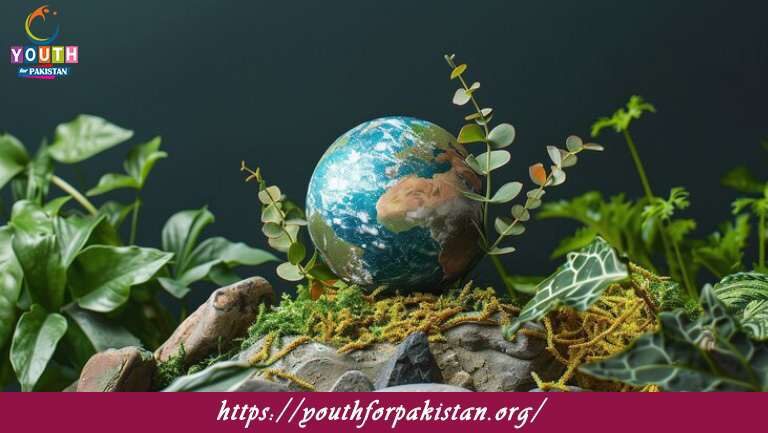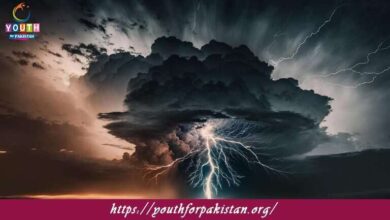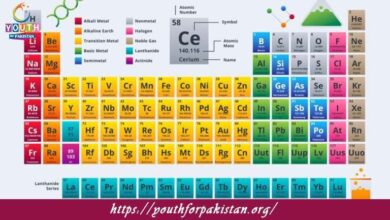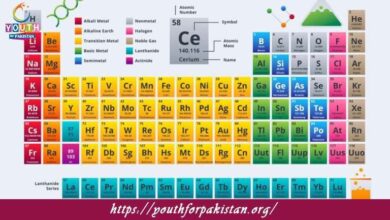12th Class Biology Chapter 25 MCQs with Answers

Master the dynamics of ecosystems with 12th Class Biology Chapter 25 MCQs. From energy flow to food webs, these questions include trending keywords like ecosystem quiz, food chain MCQs, and ecology test for enhanced ranking and better understanding.
Which of the following is a biotic component of an ecosystem?
a) Sunlight
b) Water
c) Soil
d) Plants
What is the ultimate source of energy for most ecosystems on Earth?
a) Wind
b) Water
c) Sunlight
d) Geothermal heat
What is the term for a group of individuals of the same species living in a particular area?
a) Community
b) Population
c) Ecosystem
d) Biosphere
Which of the following is an example of a natural ecosystem?
a) A city park
b) An agricultural field
c) A coral reef
d) A golf course
Which term is used to describe the role of an organism in its ecosystem, including its interactions with other organisms and the environment?
a) Habitat
b) Niche
c) Ecosystem
d) Population
What is the process by which green plants and some other organisms use sunlight to synthesize food from carbon dioxide and water?
a) Photosynthesis
b) Respiration
c) Decomposition
d) Eutrophication
Which of the following is an example of a decomposer in an ecosystem?
a) Grass
b) Rabbit
c) Fungi
d) Hawk
What is the term for the process by which water evaporates from the surfaces of plants and leaves through small openings called stomata?
a) Condensation
b) Transpiration
c) Precipitation
d) Infiltration
Which of the following is a non-renewable resource found in ecosystems?
a) Sunlight
b) Soil
c) Air
d) Fossil fuels
What is the term for a group of different species living and interacting within the same area?
a) Community
b) Population
c) Ecosystem
d) Biosphere
Which of the following is an example of an abiotic factor in an ecosystem?
a) Plants
b) Animals
c) Rocks
d) Fungi
What is the process by which water returns from the atmosphere to the Earth’s surface in
the form of rain or snow?
a) Transpiration
b) Condensation
c) Precipitation
d) Infiltration
Which of the following is an example of a pioneer species in an ecosystem?
a) Grass
b) Trees
c) Deer
d) Wolves
The process by which dead organic matter is broken down into simpler substances is called:
a) Photosynthesis
b) Respiration
c) Decomposition
d) Eutrophication
Which of the following is a biotic factor in an ecosystem?
a) Temperature
b) Sunlight
c) Soil
d) Plants
What is the term for the process by which water seeps into the soil and becomes groundwater?
a) Transpiration
b) Condensation
c) Precipitation
d) Infiltration
Which of the following is an example of a renewable resource found in ecosystems?
a) Sunlight
b) Soil
c) Air
d) Fossil fuels
What is the term for the network of interconnected food chains in an ecosystem?
a) Biodiversity
b) Trophic level
c) Food web
d) Biomass
Which of the following organisms occupies the highest trophic level in an ecosystem?
a) Producers
b) Herbivores
c) Carnivores
d) Decomposers
The process by which an ecosystem changes over time due to natural or human-induced disturbances is called:
a) Succession
b) Evolution
c) Adaptation
d) Competition
What is the term for the study of the interactions between organisms and their environment?
a) Ecology
b) Genetics
c) Evolution
d) Physiology
Which of the following is an example of an omnivore in an ecosystem?
a) Grasshopper
b) Hawk
c) Rabbit
d) Bear
What is the primary role of decomposers in an ecosystem?
a) To produce oxygen through photosynthesis
b) To regulate the climate and weather
c) To break down dead organic matter and recycle nutrients
d) To provide food for herbivores
The first species to colonize a disturbed or barren area in the process of ecological succession are called:
a) Consumers
b) Producers
c) Pioneers
d) Decomposers
Which of the following terms is used to describe a group of organisms of the same species living in the same area and interacting with each other?
a) Community
b) Population
c) Ecosystem
d) Biosphere
The movement of individuals into a population is called:
a) Immigration
b) Emigration
c) Migration
d) Colonization
Which of the following is an example of a primary consumer in an ecosystem?
a) Grass
b) Rabbit
c) Hawk
d) Fungi
What is the term for the total mass of living organisms in a given area at a specific time?
a) Food web
b) Trophic level
c) Biomass
d) Biodiversity
Which of the following terms is used to describe the feeding relationships among different organisms in an ecosystem?
a) Community
b) Population
c) Trophic level
d) Food web
Which of the following organisms occupies the lowest trophic level in an ecosystem?
a) Producers
b) Herbivores
c) Carnivores
d) Decomposers
Which of the following terms is used to describe a stable, self-regulating system in which the elements work together to maintain equilibrium?
a) Ecosystem
b) Niche
c) Homeostasis
d) Biome
The process by which water changes from liquid to vapor or gas is called:
a) Evaporation
b) Transpiration
c) Condensation
d) Precipitation
What is the term for the specific role or job that an organism has within its ecosystem?
a) Habitat
b) Niche
c) Ecosystem
d) Population
Which of the following is an example of a secondary consumer in an ecosystem?
a) Grass
b) Rabbit
c) Hawk
d) Fungi
The process by which water vapor in the atmosphere turns into liquid water is called:
a) Evaporation
b) Transpiration
c) Condensation
d) Precipitation
Which of the following terms is used to describe all the living organisms within an ecosystem?
a) Biodiversity
b) Trophic level
c) Community
d) Biomass
Which of the following is an example of a tertiary consumer in an ecosystem?
a) Grass
b) Rabbit
c) Hawk
d) Fungi
The process by which water falls from the atmosphere to the Earth’s surface in the form
of rain, snow, sleet, or hail is called:
a) Evaporation
b) Transpiration
c) Condensation
d) Precipitation
Which of the following terms is used to describe the study of the interactions between living organisms and their physical environment?
a) Biogeography
b) Ecology
c) Genetics
d) Physiology
What is the term for the process by which water vapor is released from the leaves of plants into the atmosphere?
a) Evaporation
b) Transpiration
c) Condensation
d) Precipitation
The process by which water moves from the Earth’s surface to the atmosphere in the
form of water vapor is called:
a) Evaporation
b) Transpiration
c) Condensation
d) Precipitation
What is the term for the region of the Earth where life exists, including the interactions between living organisms and their physical environment?
a) Ecosystem
b) Niche
c) Biosphere
d) Population
Which of the following is an example of a producer in an ecosystem?
a) Grass
b) Rabbit
c) Hawk
d) Fungi
The process by which water soaks into the ground and becomes part of the groundwater is called:
a) Evaporation
b) Transpiration
c) Condensation
d) Infiltration
Which of the following is an example of an autotroph in an ecosystem?
a) Grass
b) Rabbit
c) Hawk
d) Fungi
The process by which carbon dioxide is taken in by plants during photosynthesis and released back into the atmosphere during respiration is called:
a) Decomposition
b) Carbon fixation
c) Combustion
d) Eutrophication
What is the term for the process by which carbon is returned to the atmosphere through the burning of fossil fuels or other organic matter?
a) Decomposition
b) Carbon fixation
c) Combustion
d) Eutrophication
Which of the following is an example of a heterotroph in an ecosystem?
a) Grass
b) Rabbit
c) Hawk
d) Fungi
The process by which nitrogen is converted into different forms in the soil by bacteria is called:
a) Nitrogen fixation
b) Denitrification
c) Ammonification
d) Nitrification
What is the term for the process by which nitrogen gas in the atmosphere is converted into ammonia or nitrate by bacteria in the soil?
a) Nitrogen fixation
b) Denitrification
c) Ammonification
d) Nitrification
Which of the following is an example of a detritivore in an ecosystem?
a) Grass
b) Rabbit
c) Hawk
d) Earthworm
The process by which phosphorus is released from rocks and becomes available to plants is called:
a) Phosphorus fixation
b) Phosphorus assimilation
c) Phosphorus recycling
d) Phosphorus weathering
What is the term for the process by which phosphorus is taken up by plants and incorporated into organic compounds?
a) Phosphorus fixation
b) Phosphorus assimilation
c) Phosphorus recycling
d) Phosphorus weathering
Which of the following is an example of a scavenger in an ecosystem?
a) Grass
b) Rabbit
c) Hawk
d) Vulture
The process by which phosphorus is returned to the soil through the decomposition of dead organic matter is called:
a) Phosphorus fixation
b) Phosphorus assimilation
c) Phosphorus recycling
d) Phosphorus weathering
What is the term for the process by which water in the soil is taken up by plant roots and released into the atmosphere through transpiration?
a) Evaporation
b) Transpiration
c) Condensation
d) Precipitation
Which of the following is an example of a keystone species in an ecosystem?
a) Grass
b) Rabbit
c) Hawk
d) Sea otter
The process by which water vapor in the atmosphere turns into liquid water and falls to
the Earth’s surface as rain or snow is called:
a) Evaporation
b) Transpiration
c) Condensation
d) Precipitation
What is the term for the process by which organisms move into or out of an ecosystem?
a) Immigration
b) Emigration
c) Migration
d) Colonization
Which of the following is an example of a biome?
a) Forest
b) Pond
c) Field
d) Cave
If you are interested to enhance your knowledge regarding Physics, Chemistry, Biology, and Computer please click on the link of each category, you will be redirected to dedicated website for each category.





